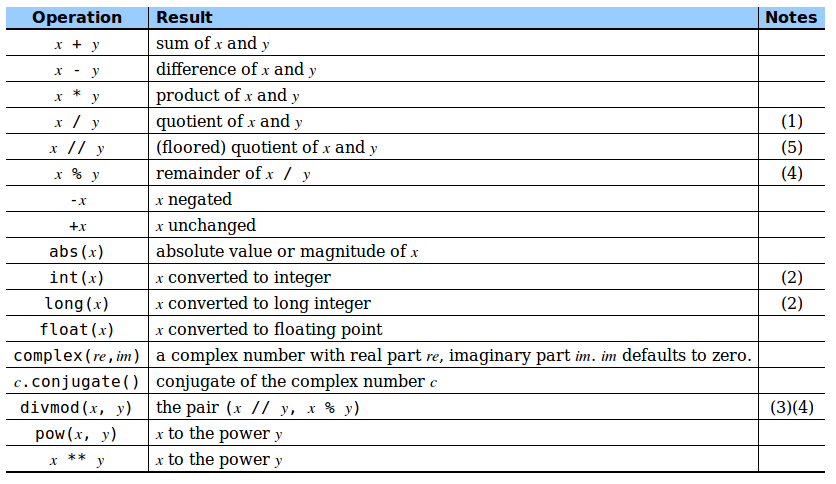October 6, 2016
Python - Numbers
We'll learn about different numbers and doing math in python. So open up a python interpreter if you forgot how to just look at the previous post.
Just like before try out each line one by one into the python interpreter.
5 + 2
5 - 2
5 * 2
5 / 2
5 % 2
5 ** 3
5 ** (1/2)
5 ** (1/2.0)
float(2)
float(5/2)
float(5) / 2
5 / float(2)
5 / 2.0
5 - 2 * 5
(5 - 2) * 5
Explanations below:
Line 1-7:
5 + 2
5 - 2
5 * 2
5 / 2
Line 9:
5 % 2
Line 11:
5 ** 3
Line 13:
5 ** (1/2)
Line 15:
5 ** (1/2.0)
Line 17:
float(2)
Line 19:
float(5/2)
Line 21:
float(5) / 2
Line 23:
5 / float(2)
Line 25:
5 / 2.0
Line 27:
5 - 2 * 5
(5 - 2) * 5
For those wanting all the numeric types and learn more about them here is a table from python's documentation.
